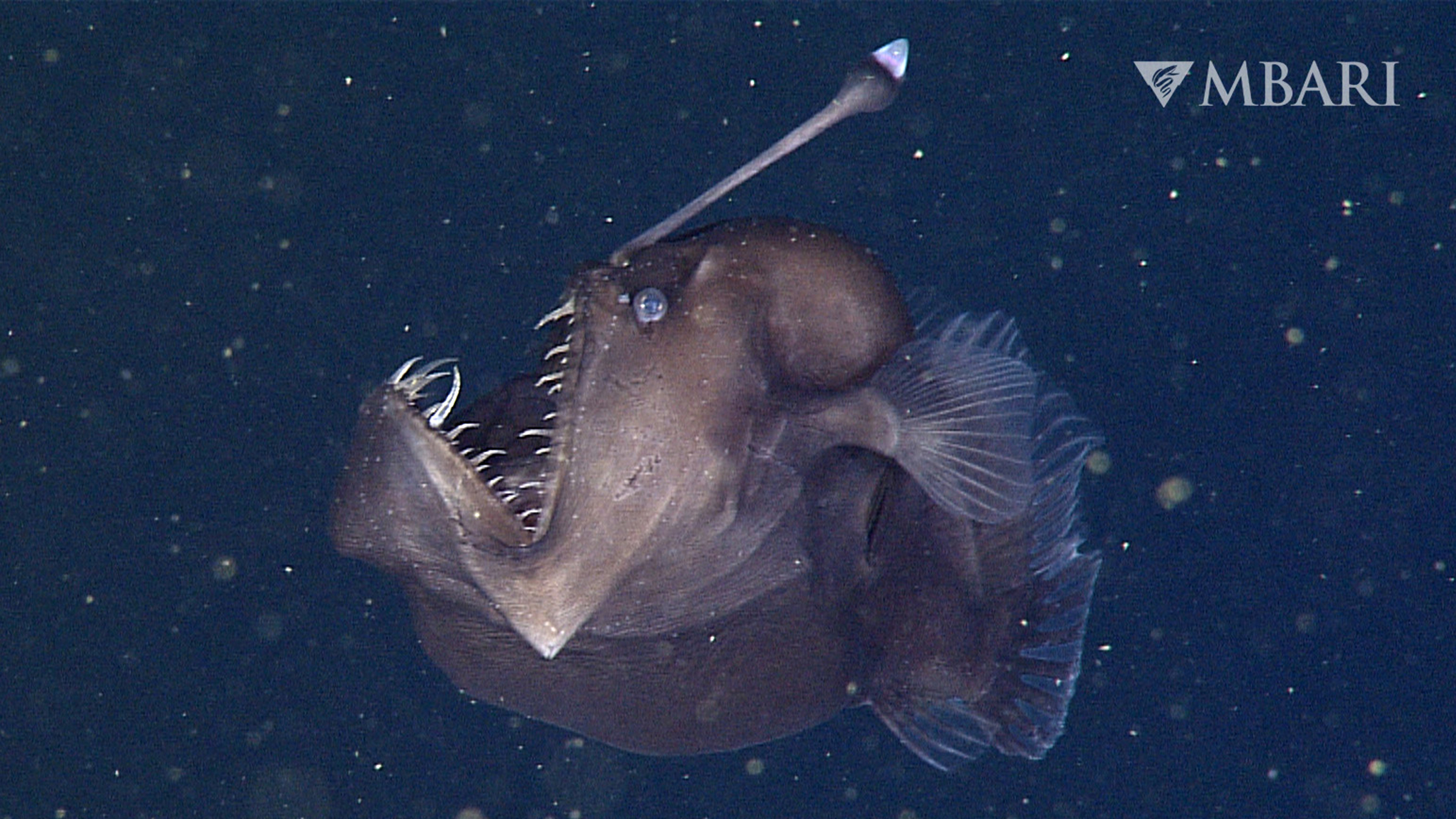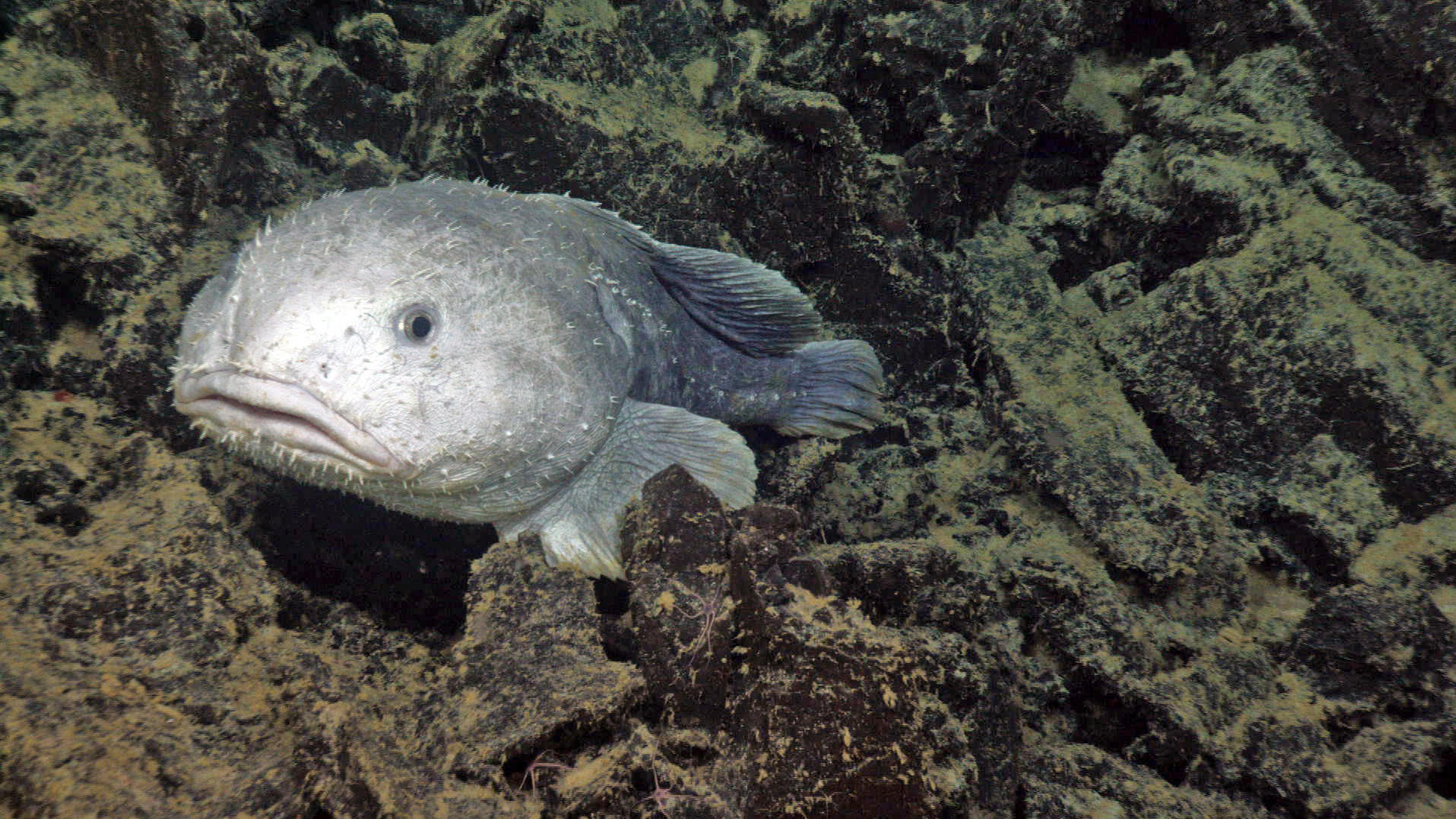Why do deep-sea fish look like aliens?
Deep-sea fish have evolved unique traits to thrive in their unforgiving habitat.
Many of the fish lurking in the depths of the ocean resemble the alien villains of horror films, with gargantuan teeth, glow-in-the-dark bodies and bulging eyeballs. But why do these fish have such otherworldly features?
The bizarre appearance of deep-sea fish is largely a reflection of the extreme environment they dwell in. Most of the deep ocean, which starts 656 feet (200 meters) below the surface, has little to no light, high pressure systems, low food availability, and is much colder than the rest of the ocean, with an average temperature just above freezing at 39 degrees Fahrenheit (4 degrees Celsius).
"The deep sea is a really harsh place to make a living, so a lot of animals have really had to adapt some niche adaptations to survive in that environment," Mary McCarthy, a fish biologist at the Monterey Bay Aquarium in California, told Live Science.
Related: How deep is the Mariana Trench?
Without many opportunities to find food, deep-sea fish have developed traits to help them capture prey, one of the most fearsome being a massive set of jaws. For example, Sloane's viperfish (Chauliodus sloani) has fangs that are so large it cannot close its mouth without puncturing its brain. These razor-sharp teeth are also transparent, which means they can hide their weapons from prey until it's too late. Other deep-sea fish like the pelican eel (Eurypharynx pelecanoides) have mouths that, when stretched, take up the majority of their bodies so that they can capture and swallow large fish they find in these deep-sea food deserts.
Underwater light show
Some deep-sea predators have a secret weapon that makes them a prey magnet: bioluminescence — or the ability to generate their own light. Take the female black seadevil, or deep-sea anglerfish, a type of fish that made an appearance in the 2003 computer-animated film "Finding Nemo." These nightmare-inducing creatures lure prey using a glow-in-the-dark light at the end of a rod attached to their heads, similar to bait at the end of a fishing pole. This light can attract prey, in part, because marine creatures may think they are about to gobble up a small luminescent creature (when really they are about to become the meal).
But luring in prey isn't the only advantage of bioluminescence, which can be seen in more than 75% of deep-sea fish, according to a 2017 Nature study by researchers with the Monterey Bay Aquarium Research Institute. Some deep-sea fish, such as the giant hatchetfish (Argyropelecus gigas), are able to dim and brighten to match the light in their surroundings, using bioluminescence as a cloaking mechanism to hide from potential enemies.
Get the world’s most fascinating discoveries delivered straight to your inbox.
Others use the ability to "to help them find food, attract a mate, and to defend against predators," Edith Widder, a marine biologist and founder of the Ocean Research & Conservation Society environmental group based in Florida, told Live Science. Widder has been on hundreds of submersible dives to research deep-sea bioluminescence, and compares the underwater phenomenon to "Van Gogh's Starry Night, but in three dimensions."
Related: Why are there so many giants in the deep sea?
In most cases, this light show is the result of a chemical reaction within a fish's body, in which a light-emitting compound known as luciferin combines with the enzyme luciferase to generate a photon of light, similar to "when you break a light stick," Widder said.
Another common feature in the deep sea is squishiness. Located in the waters outside of Australia and Tasmania, the blobfish (Psychrolutes marcidus) lives at depths between 1,970 and 3,940 feet (600 and 1,200 meters) , where pressure can be more than 100 times that on the surface. To survive in this crushing pressure, the blobfish has adapted an exceptionally flabby body, without a strong skeleton. That's why when the blobfish is brought to the surface, it deflates, transforming into a gelatinous creature with a face set in a perpetual frown — an appearance that earned it the title of "world's ugliest animal" in 2013.
Outlandish or ordinary?
The ocean covers more than 70% of the planet, making the deep-sea one of the largest habitats on Earth. So rather than asking why deep-sea creatures look so bizarre, maybe us land-based dwellers should be asking a different question: Are humans the strange-looking ones?
"Because [the deep sea] is dark, because it is cold, because it is oftentimes low oxygen, it's kind of like the opposite of or what we're used to," McCarthy said. "But it is like the biggest environment on Earth, and so it's normal for them, but it's just weird to us."

Kiley Price is a former Live Science staff writer based in New York City. Her work has appeared in National Geographic, Slate, Mongabay and more. She holds a bachelor's degree from Wake Forest University, where she studied biology and journalism, and has a master's degree from New York University's Science, Health and Environmental Reporting Program.






